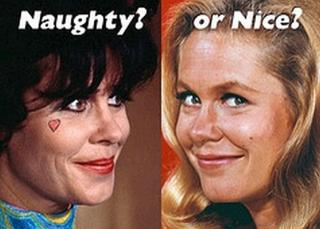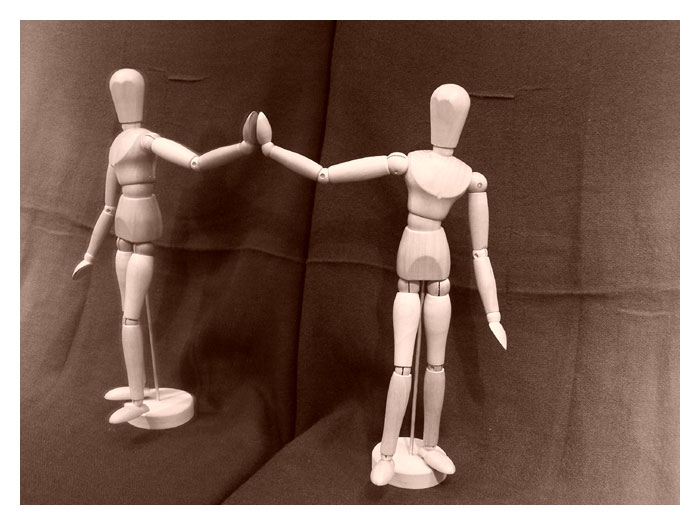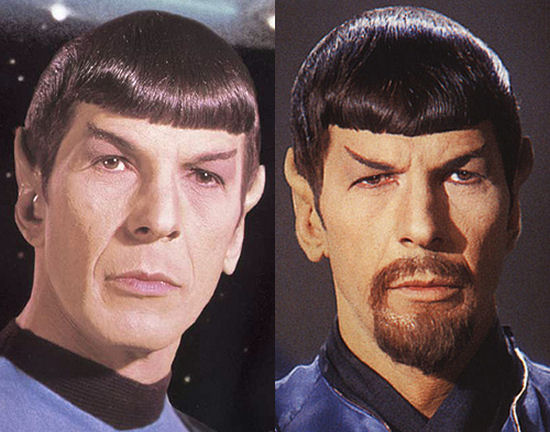|
|
|
doppelganger sometimes familiar as "evil twin" (but all doppelgangers aren't evil) |
A doppelganger is a literary archetype of a character who meets his or her apparent double, with plot developments following.
The plot and character device of "twinning" is widespread in all literature but appears often in fairy tales, myths, and gothic literature.
Famous texts exemplifying the doppelganger:
![]() Charles
Brockden Brown, Edgar Huntly (1800): Edgar & Clithero
Charles
Brockden Brown, Edgar Huntly (1800): Edgar & Clithero
![]() Mary Shelley,
Frankenstein (1818, 1823): Victor Frankenstein & the Creature
Mary Shelley,
Frankenstein (1818, 1823): Victor Frankenstein & the Creature
![]() Edgar Allan Poe,
William Wilson (1839) and others
Edgar Allan Poe,
William Wilson (1839) and others
![]() Fyodor
Dostoyevsky, The Double: A Petersburg Poem (novella, 1846)
Fyodor
Dostoyevsky, The Double: A Petersburg Poem (novella, 1846)
![]() Charlotte Bronte,
Jane
Eyre (1847): Jane & Bertha
Charlotte Bronte,
Jane
Eyre (1847): Jane & Bertha
![]() Robert Louis Stevenson, Strange Case of Dr. Jekyll
and Mr. Hyde (1886)
Robert Louis Stevenson, Strange Case of Dr. Jekyll
and Mr. Hyde (1886)
![]() Henry James,
The Jolly Corner (1908)
Henry James,
The Jolly Corner (1908)
![]() Joseph Conrad,
The Secret Sharer
(1909)
Joseph Conrad,
The Secret Sharer
(1909)
![]() Stephen King,
The Dark
Half (1989)
Stephen King,
The Dark
Half (1989)
![]() Darren Aronovsky, director.
The Black Swan (2010)
Darren Aronovsky, director.
The Black Swan (2010)
![]() Louise
Erdrich, The Round House
(2012): Linden Lark and Linda Lark Wishkob (twins)
Louise
Erdrich, The Round House
(2012): Linden Lark and Linda Lark Wishkob (twins)
Emily Bronte's Wuthering Heights (1847) has cross-generational twinning, as Catherine Earnshaw and Heathcliff appear cross-twinned by Hareton Earnshaw and Cathy Linton.
A pop-culture example with a different spin: superheroes often have "alter egos":
![]() Superman / Clark Kent
Superman / Clark Kent
![]() Batman / Bruce Wayne
Batman / Bruce Wayne
![]() Thor / Donald Blake
Thor / Donald Blake
![]()
Final exam excerpt from LITR 4232 American Renaissance question: Describe the characteristics and significance of the Gothic . . .
When one thinks of Gothic, Poe
is often the first writer that comes to mind. . . . Poe often wrote with the
traditional Gothic setting, Europe. However, his use of the Gothic as a mode
extends past settings or establishing an attitude in the reader. . . . When Poe
includes a Gothic space in his writing, for example a house, it
usually parallels or corresponds with the unconscious mind of the reader
or the characters in the works. In "The Fall of the House of Usher"
we see that the house has vacant eye-like windows and we are presented with
the fact that the house is identified along with the family. This
technique of twinning is another common occurrence in the Gothic. Once
this convention is identified, the reader can see that whatever the family is
going will be reflected on the house and likewise. Twinning also appears
with the Roderick and Madeleine twins. . . . [DG 2001]
![]()
wordnetweb.princeton.edu/perl/webwn: A ghostly double of a living person that haunts its living counterpart.
![]()
Other definitions:
http://doppelgangerdefinition.com/ : The German word ‘Doppelganger' meaning ‘double walker' is derived from the German word ‘doppel' meaning ‘double' and ‘ganger' meaning ‘walker'. Doppelganger is, therefore, an apparition of oneself or someone whom we are aquainted with and even someone whom we have never met before. . . . [T]he word is used as a synonym for ‘alter ego', ‘evil twin', ‘clone', ‘duplicate' ‘mirror image' and such other words.
Northrop Frye et al, The Harper Handbook to Literature :
An alter ego; a second passional self haunting one's rational psyche; from German, "double-goer." G. H. Schubert, a follower of Franz Mesmer's psychotherapy and forerunner of Freud in seeing dreams as symbolic of repressed subconsciousness, predicted this psychic doubleness in Die Symbolik des Traumes (Bamberg, 1814--The Symbolism of Dreams ). Immanuel Kant (1724-1804) had already seen a perpetual contention between humankind's evil heart and rational head and romances had for centuries paired good and evil identities . . . Nevertheless, E. T. A. Hoffmann (1776-1822) specifically embodied Schubert's psychology in his supernatural tales collected as Die Serapionsbrüder (4 vols., 1819-1821--The Serapion Brethren ) and Die Lebensansichten des Katers Murr (2 vols., 1820-1822--Katers Murr's Views of Life ), widely translated, and much of nineteenth-century fiction followed suit. Mary Shelley's Frankenstein (1818), for instance, grew out of reading ghost stories--among them presumably Hoffmann's--with Byron and Shelley during a rainy Swiss summer, with all three trying a hand at writing some. . . .
![]()
About.com stories of (more or less) actual doppelgangers
Examples of doppelganger usage in a variety of media:
- In the Dungeons & Dragons fantasy role-playing
game, Doppelgangers are monstrous humanoids, identified primarily by their
ability to change their shape and appearance to mimic almost any humanoid
creature. ...
en.wikipedia.org/wiki/Doppelganger_(Dungeons_&_Dragons)
- Doppelganger|アカルイミライ| is a 2003 Japanese film
written and directed by Japanese director Kiyoshi Kurosawa, starring Koji
Yakusho and Hiromi Nagasaku.
en.wikipedia.org/wiki/Doppelganger_(2003_film)
-
Warrior is a high fantasy novel written by Marie
Brennan. It chronicles adventures by Miryo, a witch, and Mirage, Miryo's
doppelgänger. ...
en.wikipedia.org/wiki/Doppelganger_(novel)
- Doppelgänger is the 1992 debut album by the British
band Curve. A continuation of the musical idiom established by the group on
its three earlier EPs, the record combines elements of dance music and
alternative rock with the reverb- and distortion-heavy stylings of
"shoegazing".
en.wikipedia.org/wiki/Doppelgänger_(Curve_album)
- Doppelgänger is a 1969 British science-fiction film
directed by Robert Parrish. The film was released in the United States as
Journey to the Far Side of the Sun, a title by which it is now better known.
...
en.wikipedia.org/wiki/Doppelgänger_(1969_film)
- Doppelgänger is the title of a 1983 album by rock
band Daniel Amos, released on Alarma! Records.
en.wikipedia.org/wiki/Doppelgänger_(Daniel_Amos_album)
- Doppelganger (a.k.a. Doppelganger: The Evil Within)
is a 1993 film starring Drew Barrymore. The story follows Holly Gooding
(Barrymore), who moves from New York City to Los Angeles after being
implicated in a murder. She is followed by what is apparently her evil twin.
...
en.wikipedia.org/wiki/Doppelganger_(1993_film)
![]()
Pop-culture examples of Gothic Twinning
Star Trek: Kirk meets Evil Kirk
In the original Star Trek series, episode #33 (1967) titled "Mirror,Mirror," a transporter malfunction swaps the commanders of the Starship Enterprise with their evil counterparts in a parallel univers.
|
|
|
![]()
Bewitched: Samantha & cousin Serena
(fair lady / dark lady)
|
|
|

More recent nominees?





